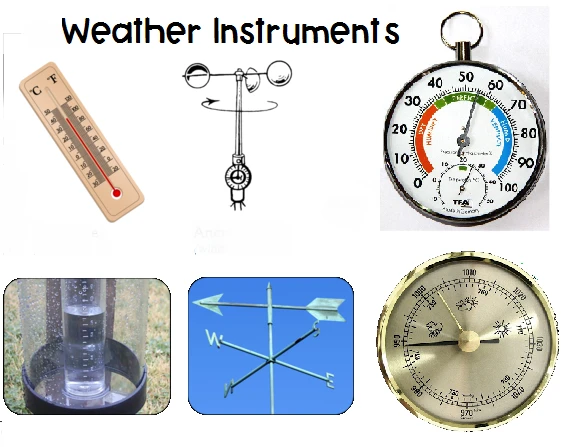
# The Instruments of the Weather
## Understanding Weather Instruments
Weather instruments are essential tools used by meteorologists and weather enthusiasts to measure and predict atmospheric conditions. These instruments provide valuable data that helps us understand weather patterns, forecast changes, and prepare for extreme conditions.
## Common Weather Instruments
### Thermometer
The thermometer is perhaps the most well-known weather instrument. It measures air temperature, which is crucial for understanding current conditions and predicting future weather patterns. Modern thermometers use various technologies, including mercury, alcohol, and digital sensors.
### Barometer
A barometer measures atmospheric pressure, which is a key indicator of weather changes. Rising pressure often indicates fair weather, while falling pressure may signal approaching storms. There are two main types: mercury barometers and aneroid barometers.
### Hygrometer
This instrument measures humidity – the amount of water vapor in the air. Humidity affects how we perceive temperature and plays a significant role in weather formation. Digital hygrometers have largely replaced traditional hair tension hygrometers.
### Anemometer
Anemometers measure wind speed, while wind vanes determine wind direction. These measurements are critical for weather forecasting, aviation, and marine operations. Cup anemometers and sonic anemometers are common types used today.
### Rain Gauge
Precipitation is measured using a rain gauge. These simple but effective instruments collect and measure the amount of liquid precipitation over a set period. Modern versions often include digital recording capabilities.
## Advanced Weather Instruments
### Weather Balloons
Meteorologists use weather balloons to gather data from the upper atmosphere. These balloons carry instrument packages called radiosondes that measure temperature, humidity, pressure, and wind as they ascend through the atmosphere.
### Weather Satellites
Satellites provide a global perspective on weather systems. They can track storms, measure sea surface temperatures, monitor vegetation, and observe cloud patterns from space.
### Doppler Radar
This advanced radar system can detect precipitation, measure its intensity, and determine whether it’s rain, snow, or hail. Doppler radar can also detect wind patterns and rotation in storms, making it invaluable for severe weather warnings.
## The Importance of Weather Instruments
Accurate weather data collected by these instruments is crucial for:
– Agriculture: Helping farmers plan planting and harvesting
– Aviation: Ensuring safe flight operations
– Disaster preparedness: Providing early warnings for severe weather
– Climate research: Tracking long-term climate patterns
– Daily life: Helping people plan their activities
From simple thermometers to sophisticated satellite systems, weather instruments form the backbone of meteorological science. As technology advances, these instruments continue to improve, providing more accurate and detailed information about our ever-changing atmosphere.
Keyword: instruments of the weather